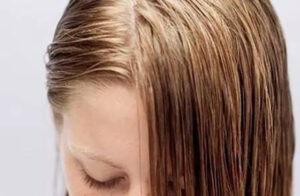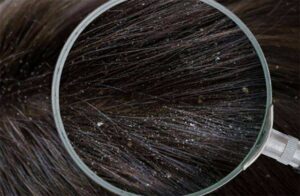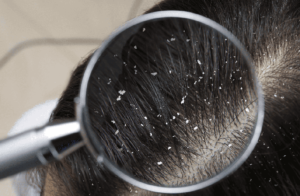Hair
Excessive Body Hair/Hairy Body
During the summer months, many women find themselves grappling with unwanted body hair.
Excessive body hair growth, or hirsutism, occurs when there is an overabundance of hair in specific areas such as the arms, legs, underarms, upper lip, and so on. For women experiencing this condition, it can be embarrassing and frustrating, as it affects their appearance and self-confidence.
Causes
Inborn Risk Factors
The growth of hair is influenced by genetic factors and hormonal levels, particularly androgens. Androgen sensitivity varies among individuals, with some people exhibiting enhanced hair growth even with normal androgen levels.
High Levels of Male Hormones
Elevated levels of male hormones, coupled with low levels of female hormones, can stimulate rapid hair growth in various areas such as the upper lip, resulting in the development of a moustache or hairy upper lip in women.
Endocrine Imbalance
Diet and lifestyle play crucial roles in maintaining a healthy endocrine system, which in turn supports healthy hair growth.
Awareness of Hair Removal Methods
Frequent shaving or the use of chemical hair removal methods can irritate hair follicle tissues, leading to accelerated hair growth and thicker regrowth. Shaving creams or waxes may also cause allergic reactions, potentially harming the body’s immune system. It’s essential to be mindful of the ingredients in these products, particularly hormonal ingredients, which can contribute to abnormal hair growth.
Premature Ovarian Failure
Premature ovarian failure can disrupt hormonal levels, affecting hair growth patterns and potentially leading to rapid hair growth.
Hair Loss
Hair loss is a common occurrence, with individuals naturally shedding between 50 to 100 hairs per day. While this level of hair loss is normal, persistent and significant shedding can lead to baldness.
The hair growth cycle consists of three phases: the growing phase, transition phase, and resting phase. In a healthy hair cycle, there is a balance between the number of hairs entering the transition/resting phase and those entering the growing phase. However, disruptions to this balance or damage to the hair follicles can result in a decrease in the number of hairs entering the growing phase, leading to noticeable hair loss and eventual baldness.
Baldness, considered a skin condition, can have profound effects on one’s appearance and self-esteem, potentially causing psychological issues such as depression, insomnia, and anxiety. Therefore, addressing hair loss promptly and effectively is essential for maintaining both physical and mental well-being.
Causes
Hair loss primarily originates from the scalp and hair follicles, analogous to soil and seeds in a garden. Just as fertile soil nurtures healthy plants, a well-functioning scalp supports robust hair growth. Hair follicles act as seeds, determining the production and growth cycles of hair. Each follicle can produce 1 to 5 hairs before reaching the end of its life cycle, typically after 15 instances of hair shedding. Consequently, hair follicles are finite and non-renewable, emphasizing the importance of preserving their health for sustained hair growth.
Hair loss can be classified as either inherited or acquired:
Inherited hair loss is influenced by genetic factors, including conditions like congenital ectodermal dysplasia and congenital hypotrichosis.
Acquired hair loss, on the other hand, stems from various external factors such as lifestyle, environment, psychological well-being, and medical conditions. Acquired hair loss is more prevalent than inherited forms.
Risk factors for acquired hair loss include:
- Hormonal imbalances resulting from dietary habits high in sugar or fat, poor sleep quality, sedentary lifestyles, or obesity.
- Psychological factors, particularly high stress levels, which can contribute to hair loss.
- Androgenetic alopecia, also known as male-pattern baldness or seborrheic alopecia, characterized by baldness above the temples.
- Decline in female hormone levels or conditions like anemia.
- Advancing age, which exacerbates hair loss.
- Chemical processes such as hair dyeing and perming, which can damage hair and scalp health.
- Certain immune disorders like lupus erythematosus, dermatomyositis, or scleroderma.
- Physical trauma such as exposure to X-rays, hair burns, or damage from friction, leading to hair loss.
Symptoms
Hair loss manifests through several visible signs, including a widening part line, thinning hair at the crown or top of the head, and increased shedding during activities like washing or brushing.
To self-assess hair loss, one can perform a simple test by grasping a small section of hair at the root between the fingers and thumb and gently tugging and sliding along the hair shaft. This process is repeated 5 to 6 times, and the number of hairs pulled away from the scalp with each movement is observed. If more than 3 or 4 hairs are extracted during each pull, it indicates a positive result for hair loss.
Itchy Scalp/Dandruff/Oily Scalp

Oily Scalp
Individuals with an overactive sebaceous gland often experience persistent oiliness on their scalp and hair roots. Despite regular washing, the scalp remains greasy throughout the day. Inadequate cleansing may lead to sebum accumulation in hair follicles, creating an environment conducive to bacterial growth. Excessive sebum secretion is frequently accompanied by dandruff and can progress to conditions like seborrheic alopecia, characterized by pattern baldness at the crown or receding hairline

Dandruff
The shedding of dead skin cells from the scalp is a natural process. However, when this shedding becomes excessive and prolonged, it may indicate a fungal infection. Fungal growth, particularly of Malassezia, can lead to the overgrowth of the stratum corneum layer, resulting in the formation of white or grey flakes. This condition, known as dandruff, is often accompanied by scalp itching, inflammation, and sensitivity. Without proper treatment, dandruff can persist, leading to chronic scalp discomfort and an unhealthy scalp environment.

Itchy Scalp
Disruption of the scalp’s natural flora balance can lead to the dominance of harmful bacteria and subsequent scalp itching. Improper hygiene practices and excessive sebum secretion are common causes of scalp itching. Additionally, conditions like dandruff and seborrheic dermatitis can exacerbate scalp itchiness, highlighting the importance of maintaining scalp health to prevent discomfort.
- Building up of scalp keratin, serious dandruff
- Itchy scalp
- Smelly scalp
- Damaged hair follicles
- Mild to severe hair loss
- Dry scalp, dry and frizzy hair
- Severe oily scalp
- Sensitive scalp
A:M22™ IPL Hair Removal Treatment
B:TriFX Radiofrequency (RF) Microneedling
C:Scalp Management
D:Herbal Formulas